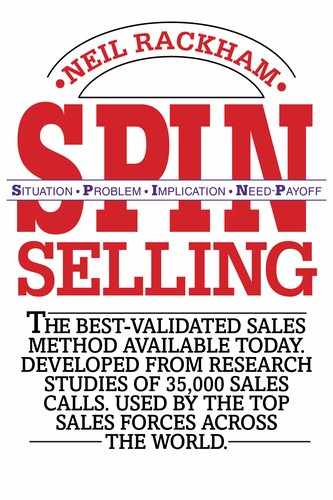Appendix B
Closing-Attitude
Scale
In Chapter 2 we looked at closing techniques, and in the “Attitude problems” section I mentioned an attitude scale that we developed to measure people’s feelings about closing. If you’d like to test yourself, here’s how:
1. Read the following 15 statements about closing.
2. After each statement, put a check in the box that most nearly represents your own opinion.
3. Follow the instructions at the end of the scale to calculate and interpret your score.
1. Closing is the most valuable of all techniques for increasing sales.

2. Trying to close a sale too often will reduce your changes of success.

3. Unless you know a lot of closing techniques, you will be unable to sell effectively.
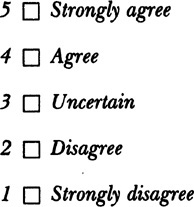
4. Even at the start of a sale, it never hurts to use a trial close.

5. Weak closing is the most common cause of lost sales.

6. Customers are less likely to buy if they recognize that you are using closing techniques.

7. You cannot close too often when selling.

8. Closing techniques don’t work with professional buyers.
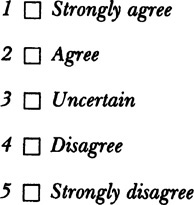
9. The ABC of selling is Always Be Closing.
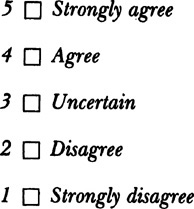
10. It’s your other behavior earlier in the sale, not your closing technique, that determines whether a customer will buy.

11. You should try to close every time that you see a buying signal.

12. From the moment you enter the customer’s office, you should act as though the sale has already been made.
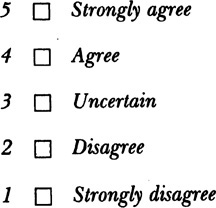
13. If a customer resists your trial close, then it’s a sign that you should have closed more forcefully.
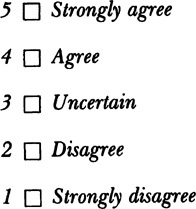
14. No matter how good your other skills, you will never succeed unless you have good closing techniques.

15. Using closing techniques early in the sale is a sure way to antagonize customers.

Calculate your Score
To calculate your score, take the number (between 1 and 5) of the box that you checked for each statement and add up your total for the 15 statements.
Theoretically, a score of 45 is absolutely neutral. A higher score shows a positive attitude toward closing, and a lower score shows a negative attitude. In practice, most salespeople score a little above 45, and in our studies we allowed for this by taking a score above 50 as demonstrating a favorable attitude toward closing.
What Do the Scores Mean?
In the study described in Chapter 2 (see Figure 2.2), the salespeople with the best results were those with a low (unfavorable) score: one below 50.
As Chapter 2 explains, however, the effectiveness of closing techniques depends on the type of selling you do. If your business involves low-value goods and services, unsophisticated customers, and no after-sale relationship with the customer, then a very favorable attitude toward closing (a score above 50) might well be justified in terms of your selling situation. But if you score above 50 on this test and your business involves larger sales, sophisticated customers, and a continuing post-sale relationship, then please read Chapter 2 very carefully. In the larger sale, closing techniques are more of a liability than an asset.
